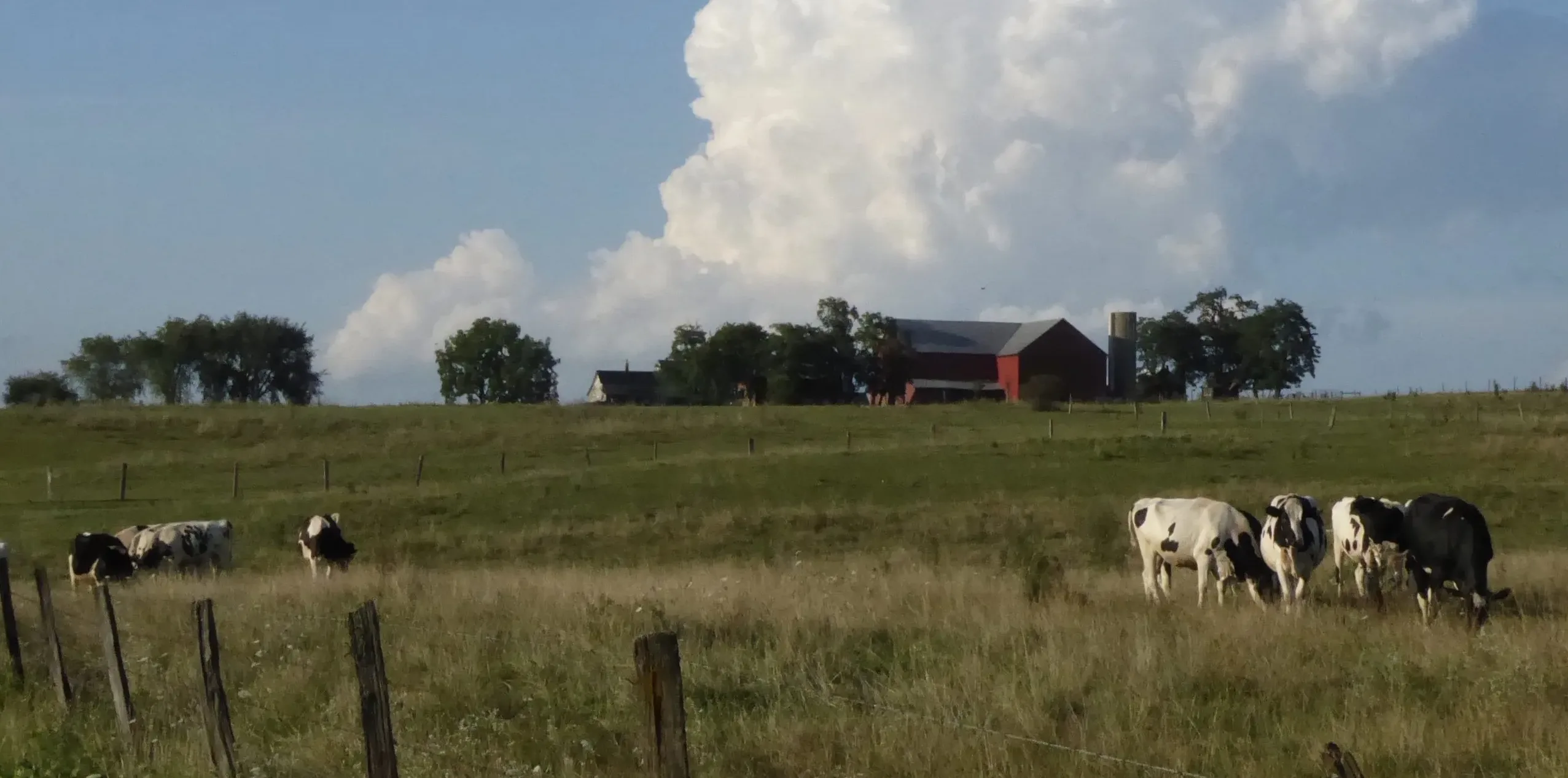
Photo by John C. Lorson
By Elizabeth Schuster, Agricultural & Environmental Economist
INTRODUCTION
It’s that time of year, when all the lists are circulating about top trends for 2024, and the economic forecasts have all been submitted. But – after reading through many, many lists – there was a distinct lack of those focused on food and agriculture trends in Ohio.
Inspired by my participation on a 2024 Economic Outlook panel at a meeting hosted by the Ohio Chamber of Commerce this January, I did some research across economic, market, and consumer trends. I integrated my own observations and knowledge from 25 years of working in and with agricultural communities, and I pulled together a list of 6 trends for 2024.
Ohio Chamber’s mission is focused on ensuring a strong economic climate where businesses can flourish and jobs are created. Given that food and agriculture are economic drivers for the state of Ohio, that makes this topic of high relevance for the Chamber’s mission. A study from Ohio State University CFAES showed that the combined impact of the agricultural and food production cluster in Ohio is $53 billion annually.
While that study is several years old, a recent article showed that food manufacturing is growing at nearly twice the pace as other sectors, outpacing the overall economy. This growth is concentrated in the Midwestern US.
If you eat food, enjoy driving by farm fields, or do business in Ohio, this blog is for you. Without further ado, here you go:
6 FOOD AND AGRICULTURE TRENDS FOR 2024
Trend 1: Disruptions in agriculture and food distribution are not going away.
Starting in 2020, many food supply chain disruptions took place, showing the world that our food supplies may be more tenuous than we realized. Then there was the war in Ukraine impacting supplies and prices, and followed by a variety of disasters in recent years including flooding, tornados and drought.
Not only do these disruptions impact food production but they also impact food access. The USDA reported that in 2022, over half of all food-insecure households in the United States had one or more adult members employed full time. Even if your household is not at risk of being food insecure, this is something that impacts our community – and our workforce. Food insecurity is an added stressor that can cause tension and instability for our current and future workforce. To address this, communities should consider planning for a more resilient food system in 2024.
Trend 2: More value-added agriculture and new market opportunities for local food products.
Considering rising input costs and the increasing disruptions facing agriculture, margins for farmers are narrow. Moving into value-added agriculture and direct-to-consumer products can be a way to increase profitability. Plus, value-added products often have a longer shelf life (think about the shelf life of fresh tomatoes compared to processed tomato sauce). However, it can be hard to break into new markets and farmers really need to be able to differentiate their products if they want to obtain a higher market price.
Many of the food trend blogs for 2024 talked about niche products on the rise, like late night snacks, and foods that are spicy, with bold colors and/or bold flavors. Snacks and niche ingredients that are bold are opportunities to launch new food products made with locally produced, good ingredients. An advantage local producers have is that they can select local flavors based upon their knowledge of local community trends, which can set them apart from the big players.
Trend 3: Continued and rising interest in sustainably produced foods.
Sustainability is not a trend – it’s been mainstreamed, with 96% of the world’s 250 largest companies reporting on sustainability. In foodservice, a recent article noted that “60% of operators are seeking products that help reduce food waste and minimize loss, addressing both environmental concerns and cost efficiency.”
Plus, there is growing interest in sourcing sustainably grown food ingredients using regenerative agricultural practices. “Regenerative” agriculture generally refers to practices to improve soil health, allowing the soil to capture more carbon. Experts are predicting that “Carbon will be the new calories,” which also means more measurement and reporting.
Trend 4: Lots of hype about plant-based products and cultivated meats.
Rising demand for plant-based products was listed on nearly every 2024 food and agriculture trend list I reviewed. While there is undoubtedly a lot of interest in these products, this is also an area where I have seen a lot of misinformation. Take caution when reading about the environmental and health claims of these new products. Double check the data.
On the cultivated meats side, where innovative new technologies are still being developed, there is also a good amount of sensational, clickbait articles. While there’s a lot of talk about cultivated meats, here it’s worth playing a longer game to see what trends emerge over 10 years. “Probably 70-90% of companies in this space are going to fail over the next year, but those that survive will build real businesses and will scale their technologies,” reported an investor in a recent article, “This is just a normal part of the cycle [for new tech].”
Trend 5: Technology and AI have reached agriculture too, and there are some concerns.
In case you haven’t gotten the memo, agriculture in Ohio has become pretty high-tech, using robots for milking cows and precision agriculture and AI. And for those who immediately think that AI is replacing jobs, here are two more interesting applications for agriculture from a recent publication:
- AI helps farmers choose the optimum seed for a given weather scenario.
- AI-powered solutions will help farmers produce more with fewer resources and improve crop quality.
However, with new technologies come risks. The Ohio Farm Bureau reported in their January-February 2024 publication that policy priorities around AI include, “considerations for data privacy, security and ownership, and necessary regulatory parameters for the use and development of AI.”
Trend 6: E-commerce grocery and food delivery have the potential to be disruptive.
In a state like Ohio, which is a mix of mostly rural and suburban counties with a handful of heavily urbanized pockets, it’s hard to predict how quickly online grocery and food delivery services will grow and evolve. A Bank of America survey found that 61% of consumers said they expect to purchase groceries online in 2024. Walmart had 25% of market share for groceries in 2022, though in 2023 Walmart captured 36% of online grocery sales.
With a growing diversity of food delivery services combined with online grocery sales, and new models starting to emerge like drive-thru grocery stores, if nothing else, it’s clear that this area of consumption is rapidly changing. While others are predicting that technology – like AI – is the biggest potential disruptor in food and agriculture, I would push back and say, what about the changing grocery industry? The consumer behaviors around buying groceries, going to grocery stores, and consuming food are foundational to the lifestyle and culture of many households.
Any significant changes to the way we buy groceries, and where they come from, could have a huge impact on communities and our way of life. And I’m calling that a big potential disruption.





